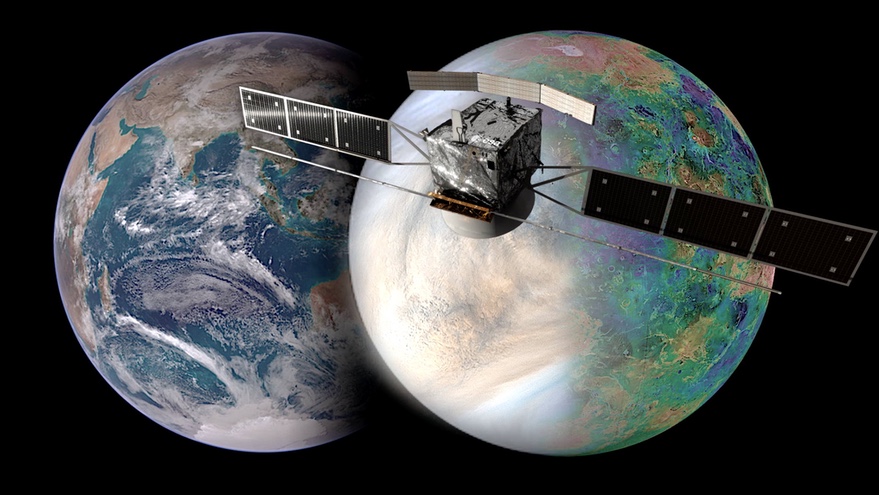WASHINGTON — The European Space Agency has selected a Venus orbiter as its next medium-class science mission, just a week after NASA announced the section of two Venus missions of its own.
ESA announced June 10 that EnVision will be the agency’s next M-class, or medium-class, science mission. The orbiter will carry a suite of spectrometers, sounders and a radar to study the planet’s interior, surface and atmosphere.
Solar Orbiter will launch no earlier than 2031 on an Ariane 6 rocket. A baseline mission timeline included in a mission assessment study projected a launch during a one-month window that opens in late May 2032, arriving at Venus in August 2033. It would then use the planet’s atmosphere to aerobrake into its final science orbit by early 2035 for a four-year science mission.
EnVision was one of two finalists for the “M5” mission opportunity, along with Transient High-Energy Sky and Early Universe Surveyor (THESUS), an astronomy mission designed to look for transient events, in particularly gamma-ray bursts from the early universe. A third finalist, an infrared space observatory called SPICA that would have flown in cooperation with the Japanese space agency JAXA, was dropped from consideration in October 2020 because of cost issues.
ESA did not disclose the estimated cost of EnVision, but under ESA’s Cosmic Vision framework of science missions, M-class missions are intended to cost about 500 million euros ($610 million).
The selection of EnVision comes after NASA announced June 2 it selected two missions to Venus as part of its Discovery program of low-cost planetary science missions. DAVINCI+ will send a probe into the planet’s atmosphere to measure its composition and take images of one region of its surface. VERITAS is an orbiter that will perform radar and infrared emission mapping of the planet’s surface.
Neither the selection of the missions nor their timing was coordinated, but both NASA and ESA embraced what is effectively a complementary Venus exploration program. “A new era in the exploration of our closest, yet wildly different, solar system neighbor awaits us,” said Günther Hasinger, ESA director of science, in a statement. “Together with the newly announced NASA-led Venus missions, we will have an extremely comprehensive science program at this enigmatic planet well into the next decade.”
“EnVision leverages strengths in instrument development by both our agencies,” Thomas Zurbuchen, NASA associate administrator for science, said in the same statement. “Combined with NASA’s Discovery missions to Venus, the science community will have a powerful and synergistic set of new data to understand how Venus formed and how the surface and atmosphere changed over time.”
Both the U.S. and Europe are contributing to each other’s missions. The synthetic aperture radar on EnVision, called VenSAR, is being provided by NASA’s Jet Propulsion Laboratory. Ironically, the Italian space agency ASI and French space agency CNES are contributing to a similar radar on NASA’s VERITAS spacecraft, while the German space agency DLR will provide the infrared mapper for VERITAS.
EnVision is the fifth M-class mission ESA has selected as part of the Cosmic Vision program. The first, Solar Orbiter, launched in February 2020. Three others are in development: Euclid, a mission to map dark matter and dark energy to launch in 2022; Plato, an exoplanet search mission launching in 2026; and Ariel, an exoplanet characterization mission launching in 2029.
